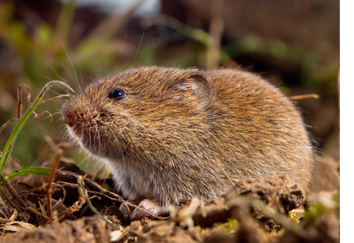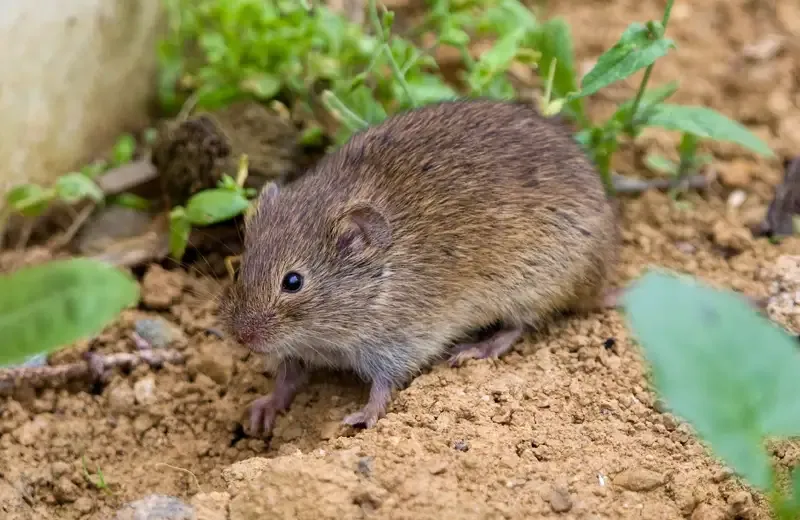Professional Methods for Vole Control and Prevention
Professional Methods for Vole Control and Prevention
Blog Article
Understanding Vole Parasite Control: In-depth Insights on Infestation Prevention and Treatment Methods
As home owners and caretakers, the existence of voles can present a substantial obstacle to keeping the honesty of our exterior rooms. Recognizing the details of vole actions is essential in establishing efficient insect control techniques. By acknowledging the subtle indications of vole invasion early, we can take aggressive actions to avoid prevalent damages. In this conversation, we will explore the subtleties of vole actions, look into the identification of infestation indications, and reveal the most efficient avoidance and therapy techniques. Stay tuned to discover the understandings that will empower you to master vole parasite control and secure your residential property versus these elusive rats.
Comprehending Vole Actions
Examining the foraging patterns of voles supplies useful understandings right into their actions and environment preferences. By observing their foraging behavior, researchers can gain a better understanding of where voles like to establish their habitats and the extent of their environmental impact.
Study suggests that voles display selective feeding routines, liking seeds, bulbs, and origins. This dietary choice affects their foraging patterns, leading them to locations rich in plant life and ground cover. Furthermore, voles are recognized to develop sophisticated passage systems for foraging and nesting objectives, indicating a high level of adaptability to their surroundings.
Comprehending vole actions is vital for executing targeted insect control steps that disrupt their environment preferences and foraging tasks (vole lawn damage). By researching their habits, specialists can develop much more reliable prevention and treatment approaches to manage vole infestations

Identifying Indications of Vole Infestation
Vole infestations can be discovered by acknowledging certain signs of their presence in an area. One of the most common signs of a vole infestation is the presence of surface area paths.
Another crucial indicator of vole problem is the presence of small burrow openings in the ground. Voles dig shallow burrow systems with numerous entryways and leaves. These burrows act as shelter and nesting sites for the voles. Additionally, voles are recognized to leave eaten plant stems, roots, and light bulbs near their burrow openings, suggesting their feeding task in the location.
In addition, vole droppings can likewise represent their visibility. Vole droppings are little, brownish, and round in shape, looking like grains of rice. Discovering these droppings along runways or near burrow openings can confirm a vole problem. By being attentive for these indicators, property proprietors can promptly attend to vole problems and prevent further damage.
Carrying Out Aggressive Avoidance Steps

In addition, employing natural vole deterrents like castor oil-based repellents or killer pee can work as reliable safety nets. It is additionally suggested to routinely evaluate outside areas for any kind of indicators of vole activity, such as paths or burrow openings, to deal with potential invasions without delay. vole control. By adopting these positive prevention strategies, homeowner can substantially minimize the likelihood of vole damages and preserve the wellness and aesthetic appeals of their landscapes
Efficient Therapy Methods
Incorporating targeted capturing techniques and using authorized rodenticides are essential elements of efficient treatment approaches for handling vole infestations. Capturing can be an effective means to decrease vole populaces, particularly when positioned purposefully in their energetic paths. Break catches and live traps can both work, with the last enabling the capture and moving of voles. When utilizing rodenticides, it is crucial to follow safety and security standards to avoid harm my sources to non-target pets and pets. Place rodenticides in protected lure terminals to decrease threats to unintended targets. Additionally, environment alteration, such as reducing ground cover and getting rid of sources of food, can aid discourage voles from infesting a location. Routine surveillance and maintenance are additionally key elements of successful therapy techniques to make certain that vole populaces are kept under control. By incorporating capturing, rodenticides, environment adjustment, and consistent monitoring, reliable vole bug control can be achieved.
Tracking and Upkeep Tips
Preserving a systematic schedule for surveillance and conducting routine maintenance activities is vital to sustain the effectiveness of vole parasite control steps. Normal tracking enables the very early detection of vole activity, allowing prompt intervention before problems aggravate. To effectively keep an eye on vole populaces, purposefully positioned catches can be made use of in vole runways or near burrow entrances. By on a regular basis examining these catches, residential or commercial property proprietors can assess the level of vole task and adjust control strategies accordingly.
Furthermore, keeping a well-kept and clean landscape is essential in vole prevention. Clearing away debris, such as heaps of wood or dense plants, gets rid of prospective vole environments. On a regular basis cutting lawns and trimming greenery helps in reducing vole concealing places and reduces their accessibility to food sources.
In addition, continuous upkeep of physical obstacles, such as fences or cord mesh, is crucial to stop vole invasion. Examining and fixing any kind of damages to these structures guarantees that vole control stays efficient in safeguarding buildings from problems. By incorporating these surveillance and upkeep techniques right into a thorough vole insect control plan, individuals can properly handle vole populaces and protect their buildings from damage.
Conclusion
Finally, understanding vole bug control requires a solid understanding of vole habits, the capacity to identify signs of infestation, implementing positive prevention procedures, reliable therapy strategies, and regular surveillance and upkeep. By taking a comprehensive method to vole control, people can effectively take care of and protect his response against invasions, inevitably safeguarding their property and surrounding setting from damages brought on by these small rats.
In this conversation, we will certainly discover the subtleties of vole habits, dig right into the identification of invasion indicators, and discover the most effective prevention and therapy techniques.Incorporating targeted capturing techniques and making use of accepted rodenticides are important parts of effective treatment methods for managing vole infestations. To successfully monitor vole populaces, tactically placed catches can be utilized in vole runways or near burrow entryways. Evaluating and fixing any kind of problems to these structures ensures that vole control remains reliable in protecting buildings from invasions. By integrating these monitoring and maintenance methods right into a detailed vole pest visit the site control strategy, individuals can properly manage vole populaces and protect their buildings from damage.
Report this page